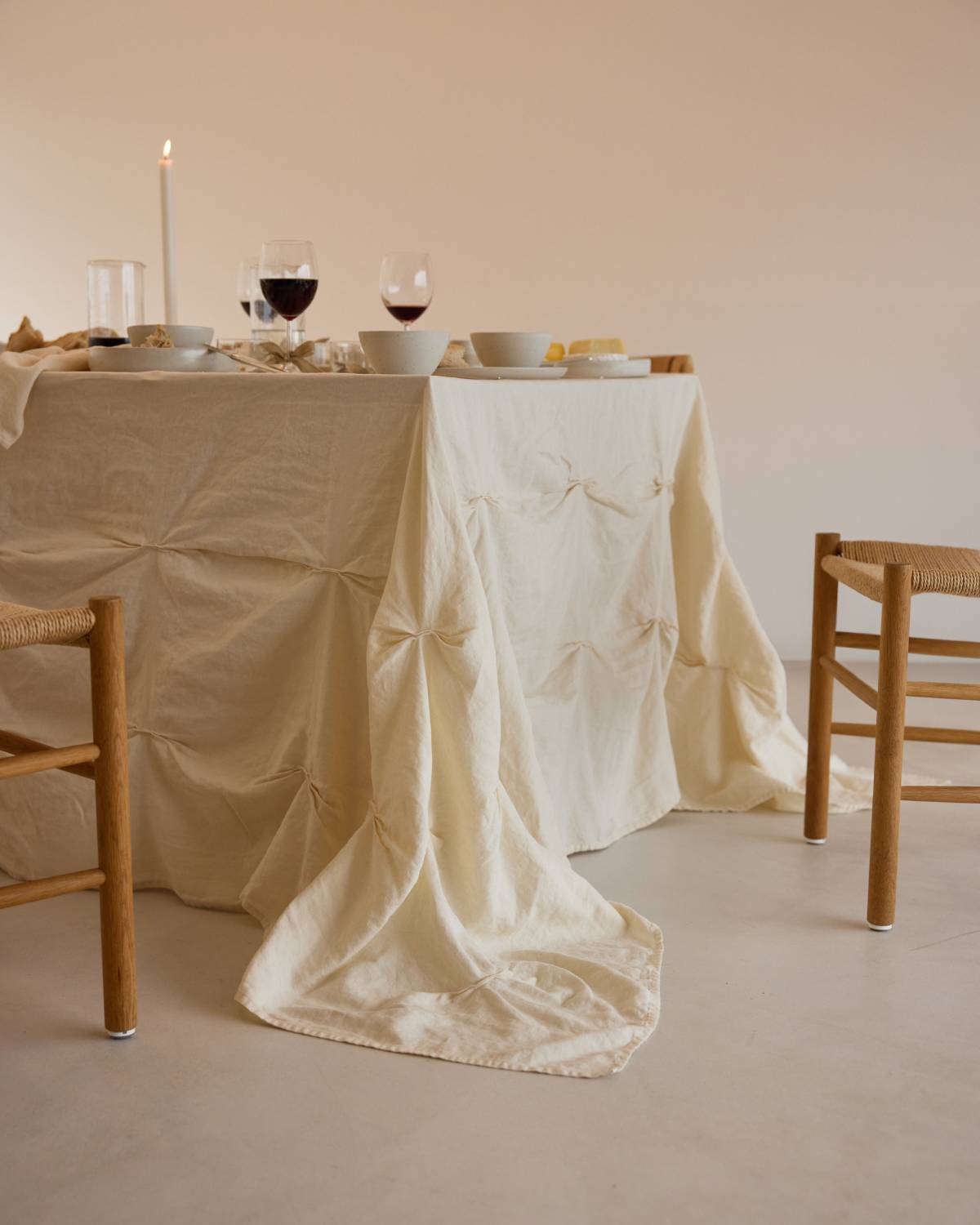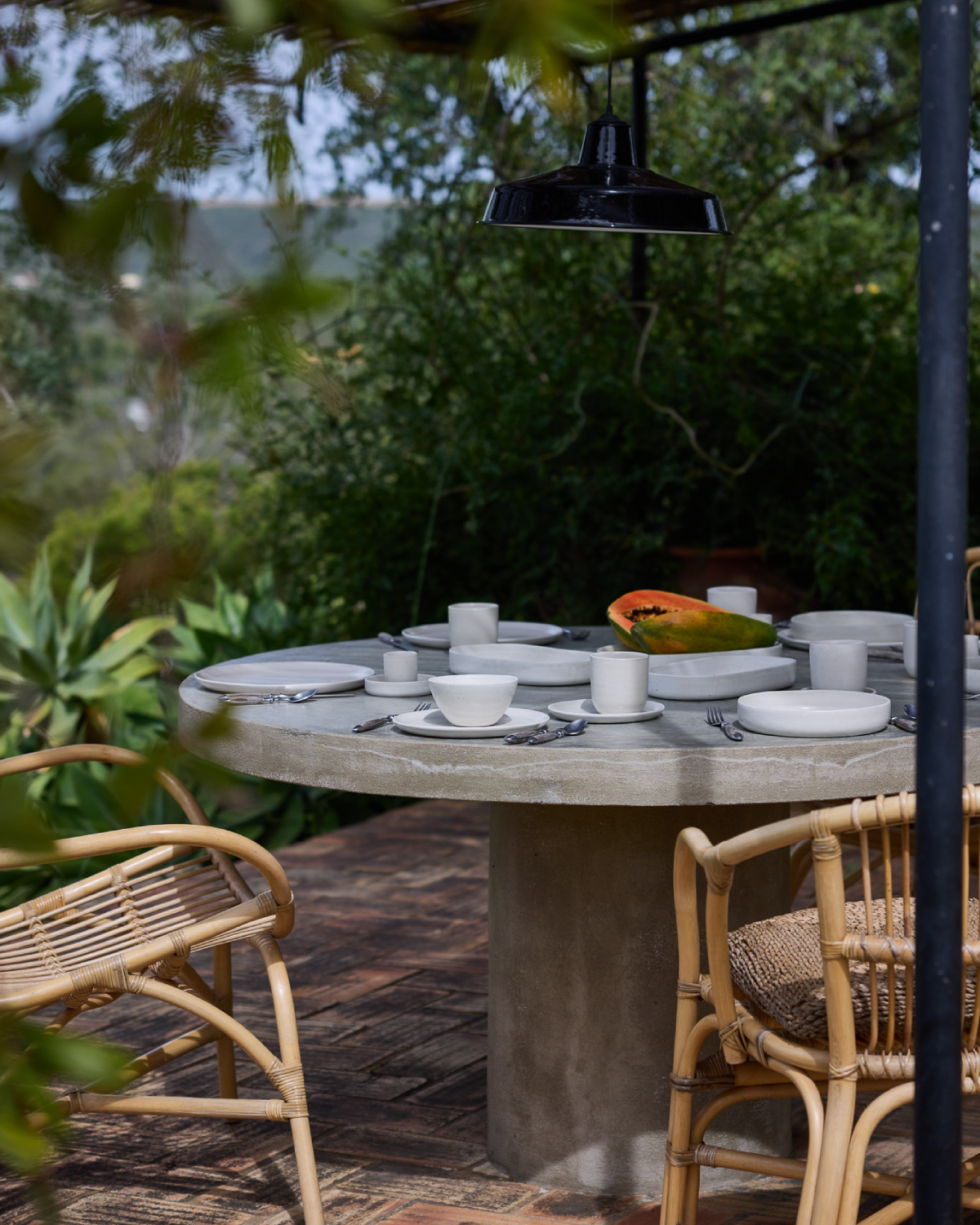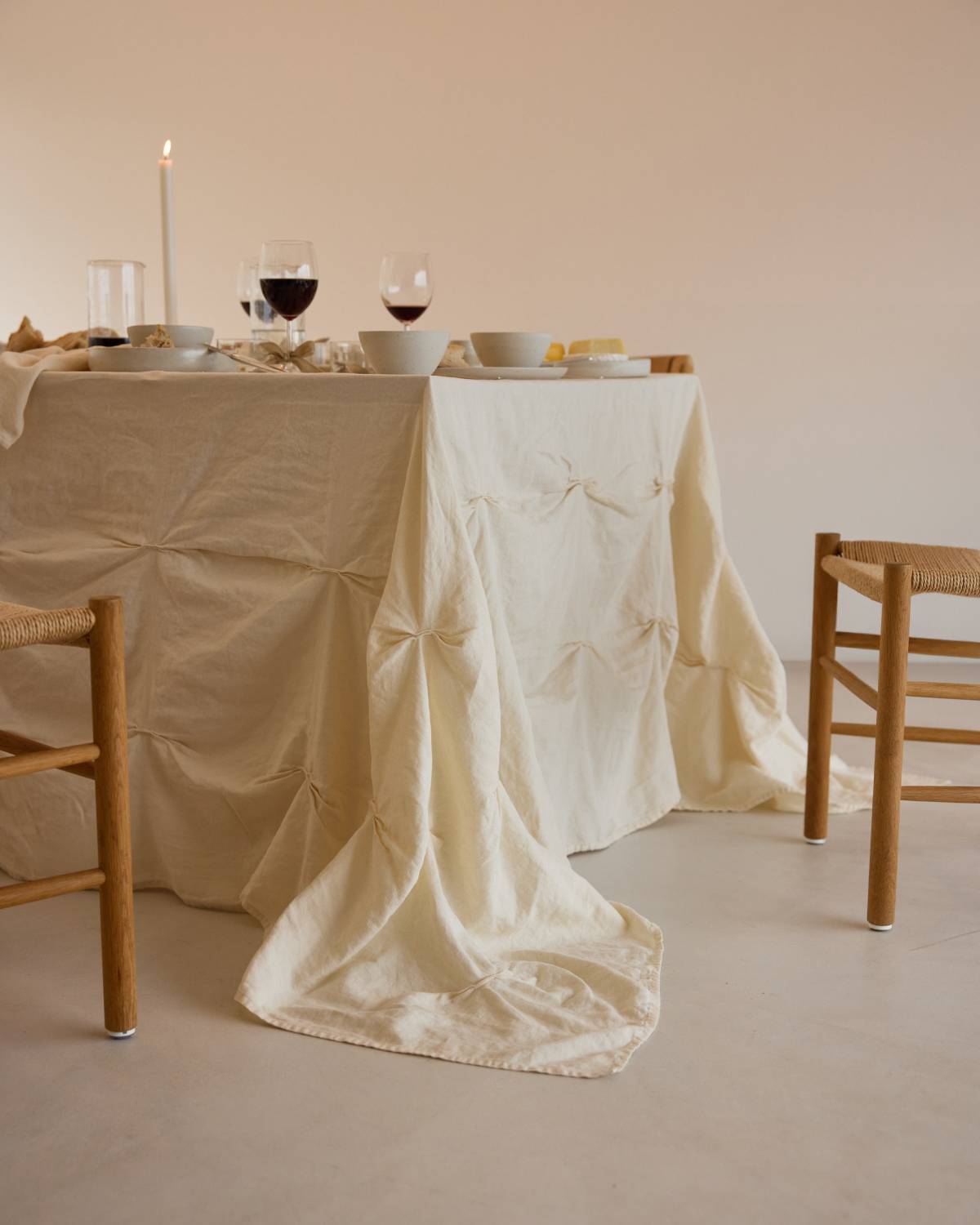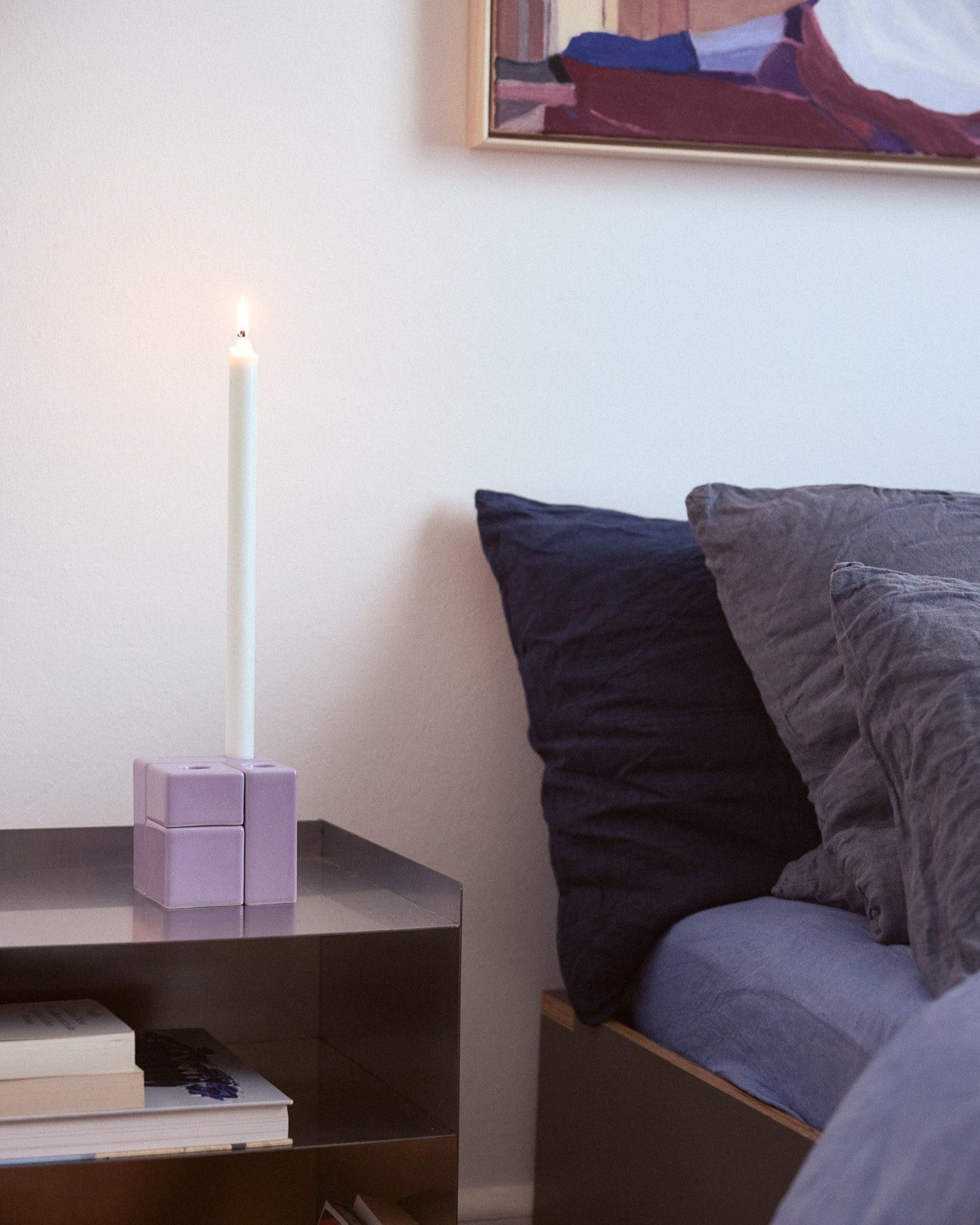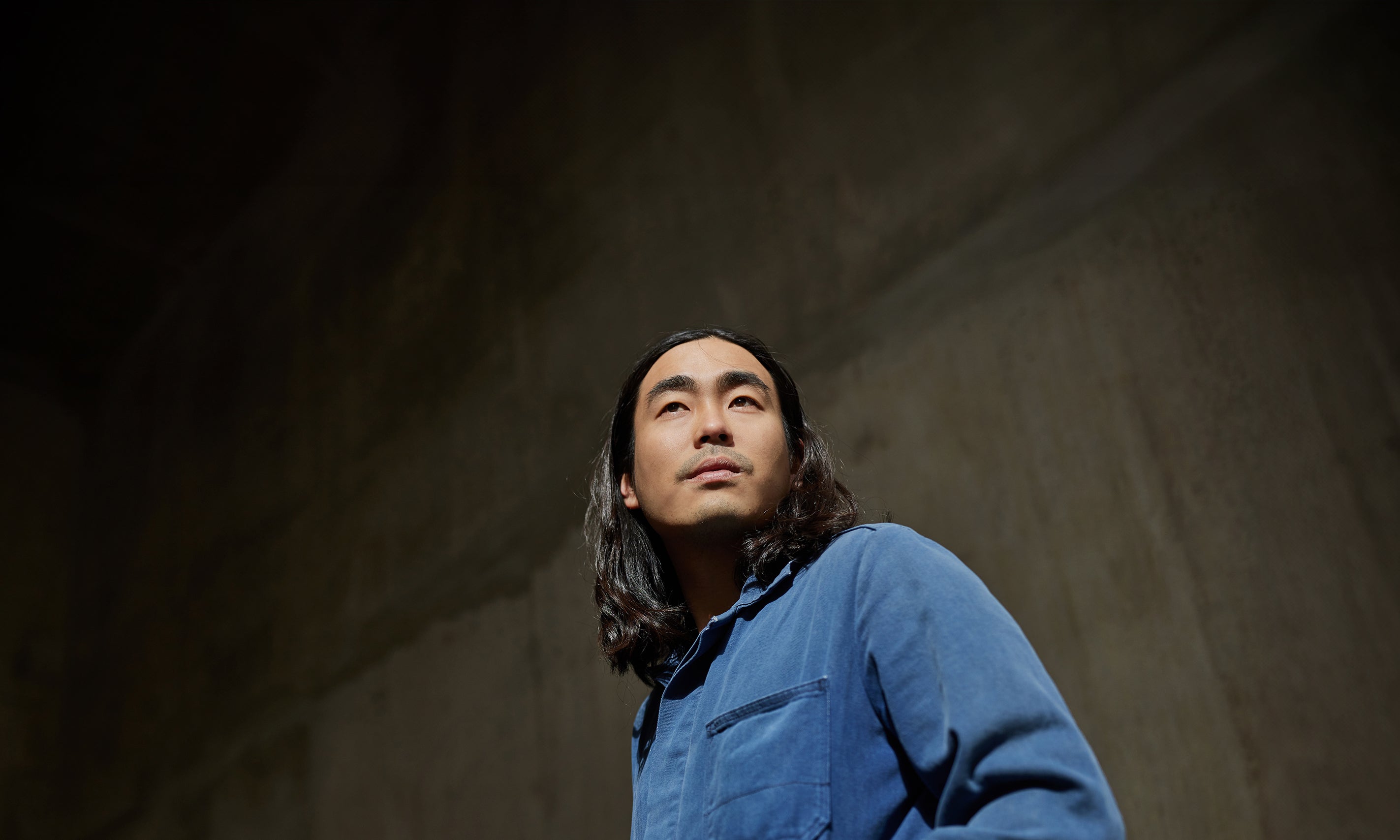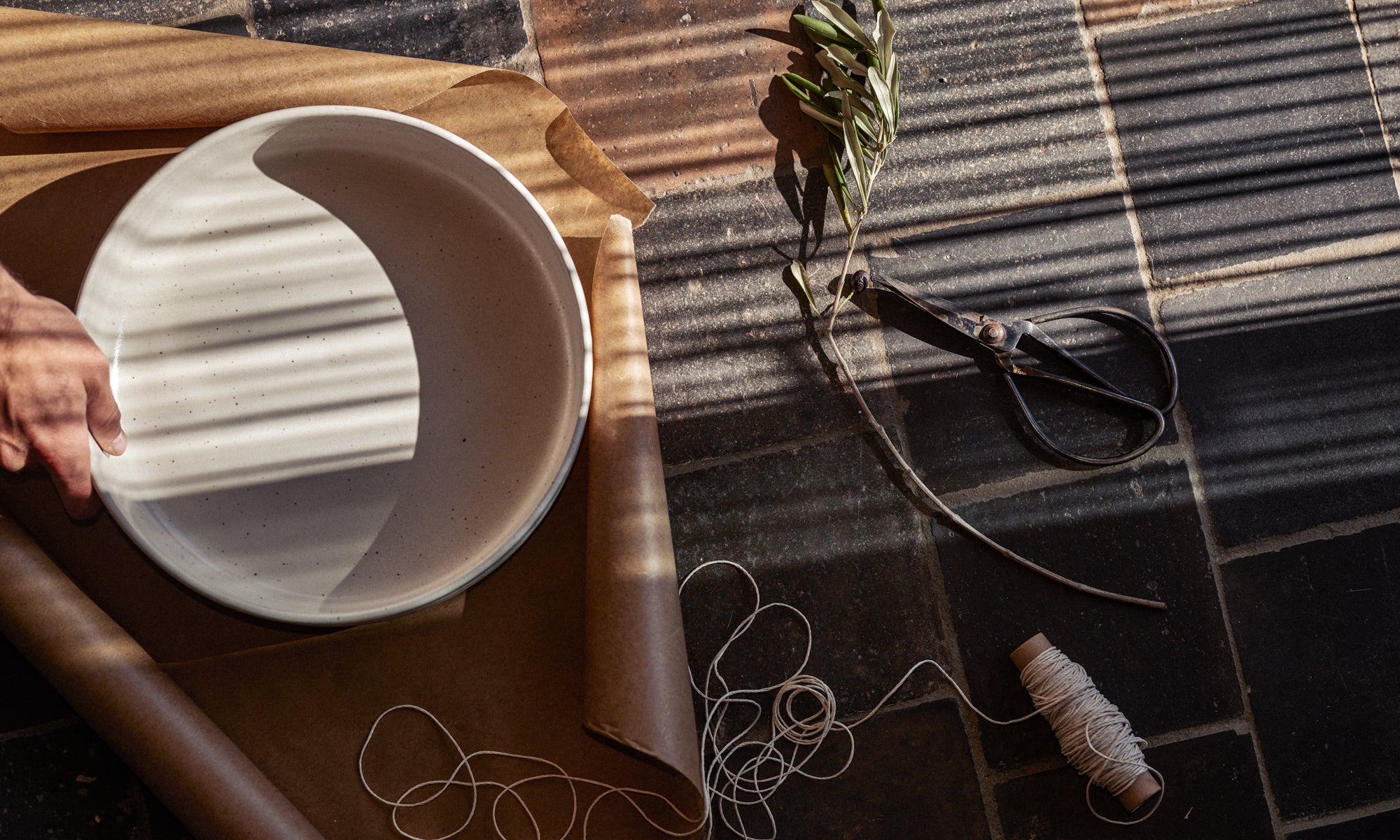Jimu Kobayashi is a ceramic artist and industrial designer from Düsseldorf with Japanese and Taiwanese roots. After studying at the Folkwang University of the Arts, he worked as a product designer at onomao in addition to his own creations from 2021-2023. Expanding his knowledge of working with the material and discovering its possibilities are his motivation and goal.
In an exclusive artist edition, he has hand-painted 50 small and 50 large ceramic vases with his distinctive design for onomao. Each vase is therefore unique.
We spoke to Jimu about his love of ceramics, his approach and the various inspirations for his work.
How did you come to ceramic art?
My first conscious contact with ceramics was through my grandmother. She practiced traditional tea ceremonies in Japan. When I visited my grandmother, she took me through the ceremony and explained all the components of a tea ceremony to me. The tea bowl is of course an essential part of it. The way I looked at such a tea bowl in the tea ceremony completely redefined my view of the object. It was there that I became interested in finding out what material this incredibly beautiful tea bowl was made of and how it was produced.
During my studies as an industrial designer, I learned how to carry out ceramic processes in industry and on the potter's wheel.
What fascinates you about working with the material?
First and foremost, I am fascinated by the ceramic process. Starting with the modeling of a soft lump of clay, the finished ceramic object is created through kiln firing at high temperatures. The material goes through a kind of metamorphosis.
The idea that these techniques have been used for centuries and that people are still working with them is incredible.
For me personally, working with the material is exciting because it is so versatile. From everyday objects to space technology or dental technology (haha).
With every new form, there are also new challenges in the realization, which you have to solve like a puzzle. This drives me to get better and better at my craft and to get to know the material better.
You are at home in Düsseldorf, but you also regularly travel to your grandparents' home country your grandparents' homeland - Japan - to what extent do your surroundings influence your art? What inspiration do you draw from the respective places?
For me, my work is a kind of search for identity. I am Japanese, born and raised in Düsseldorf. However, I have never really lived in Japan. So as a young person, I always had an inner problem with the question of where I belonged.
Through my work, however, I can answer this question of belonging by drawing on and uniting Japanese and German aesthetics.
The elongated brushstroke is characteristic of your work. What meaning does it have?
The brushstroke on my works has various meanings. With some objects, I want to emphasize and underline the form through the brushstroke or break the form and show a contrast. The brushstroke itself also carries a structure in its line that is very multifaceted. From full, deep blue, which then develops into a very soft, inconsistent shade of blue. It is intended to catch the eye of the viewer, who can then follow the line and thus better understand the form.

The vases in your collection all bear your family crest - what does it stand for and what role does your family play in your work?
The family crest has been in my family for centuries. It symbolizes a flower, which is probably related to that of the rice plant, as my family has been involved in rice cultivation for generations.
When I was looking for a signature for my work, I was asked what I was doing all this for. My answer was that I make these crafts for my family. I want them to see my work and be proud to have our emblem on it.
Ceramics have been experiencing a trend in recent years. Do you have role models for your work and how do you manage to find your own style?
There are many artists who act as role models for me. For example, Tom Kemp, who also uses the brushstroke technique. His origin of the brushstroke comes from calligraphy, which I really admire.
However, my inspiration comes from very different areas. I am very much influenced by music (Kraftwerk/Yellow Magic Orchestra) or subcultures.
In my creative process, I don't think much about my "own style" because I don't want to imitate myself. I am convinced that one's own style can be seen in retrospect, after one has implemented and realized many projects.


